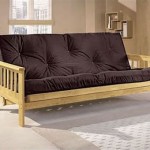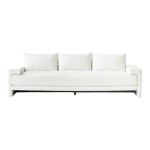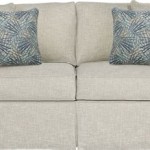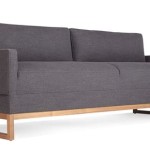Sofa or Couch: A Transatlantic Terminology Guide
The English language, while seemingly universal, presents subtle yet significant variations across geographic regions. One common example of this is the terminology used for everyday objects, particularly furniture. The terms "sofa" and "couch," both referring to a piece of upholstered seating designed for multiple individuals, exemplify this transatlantic difference. While both terms are understood on both sides of the Atlantic, their preferred usage varies distinctly between British English and American English.
Understanding these differences can be crucial for clear communication, especially in contexts such as interior design, furniture sales, or even simply engaging in conversations with individuals from different English-speaking backgrounds. This article aims to explore the nuances of "sofa" and "couch," examining their etymology, regional preferences, and any subtle variations in connotation.
Etymology and Historical Usage
Tracing the history of "sofa" and "couch" provides valuable insight into their current usage patterns. "Sofa" originates from the Arabic word "suffa," referring to a raised platform or divan often covered with cushions and blankets. This term entered the English language in the 17th century, reflecting the growing influence of Eastern cultures on European design and lifestyle. Initially, sofas were associated with luxury and were primarily found in the homes of the wealthy.
"Couch," on the other hand, has its roots in the Old French word "couche," derived from the Latin "collocare," meaning "to lay down." This suggests a more relaxed and informal origin, implying a piece of furniture specifically designed for reclining or resting. The term "couch" entered the English language around the same time as "sofa" and, for a considerable period, was often used interchangeably with it. However, as furniture design evolved and societal norms shifted, subtle differences in connotation began to emerge.
Historically, both terms encompassed a wide variety of seating arrangements. However, "sofa" gradually became associated with more formal, structured designs, often featuring ornate detailing and higher-quality materials. Couches, conversely, were often seen as more practical and less elaborate, serving primarily as comfortable seating for everyday use.
Regional Preferences: British English vs. American English
The key difference between "sofa" and "couch" lies in their regional preference. In British English, "sofa" is the overwhelmingly dominant term. While "couch" is understood, it is considered less common and may even be perceived as slightly old-fashioned or informal. In general conversations, advertisements, and formal settings within the United Kingdom, "sofa" is the preferred and expected term.
In contrast, American English exhibits a more balanced usage of both terms. "Couch" is widely accepted and commonly used, often interchangeably with "sofa." While some might argue that "sofa" carries a slightly more sophisticated connotation, the difference is subtle and largely dependent on individual preference and regional dialects within the United States. It is perfectly acceptable and common to hear "couch" used in a variety of contexts, from casual conversations to advertisements for furniture stores.
This difference in regional preference is deeply ingrained in the language and culture of each region. Attempting to pinpoint a definitive reason for this divergence is complex, but historical trends, evolving language patterns, and subtle differences in cultural perception likely contribute to the distinction.
Connotations and Subtle Differences in Meaning
While both terms generally refer to the same type of furniture, subtle differences in connotation and implied meaning can sometimes exist. As mentioned earlier, within the American context, "sofa" might be perceived as slightly more formal or upscale than "couch." This perception is not universally held but can influence the choice of word in certain situations.
Furthermore, the term "couch" is often associated with relaxation and leisure, possibly due to its etymological connection to the act of reclining. Phrases such as "couch potato" and "couch surfing" reinforce this association with inactivity and casual living. While "sofa" can certainly be used in similar contexts, it doesn't carry the same inherent association with leisure.
In British English, a "settee" is also a term often used, usually referring to a smaller sofa, typically designed to seat two people. This term is less common in American English, where "loveseat" is the more prevalent equivalent. The increasing globalisation of language means that "settee" is understood, but not commonly used. The term "chesterfield" is another that should be considered in relation to its specific meaning.
The term "chesterfield" warrants specific attention, as its meaning varies significantly between British and American English. In British English, a "chesterfield" traditionally refers to a deep buttoned sofa with rolled arms, typically made of leather. However, in some regions of Canada (and to a lesser extent, the United States), "chesterfield" is used as a general term for a sofa or couch, regardless of its style or material. This regional variation highlights the importance of understanding the specific context and location when interpreting furniture terminology.
The physical characteristics of the furniture item itself can also influence the choice of term. A large, sectional piece of furniture might be more commonly referred to as a "sofa" in both British and American English, while a smaller, more informal seating arrangement could be described as a "couch." However, these are not strict rules, and individual preference still plays a significant role.
The context in which the term is used is also important. In formal settings, such as furniture stores or interior design consultations, "sofa" might be the preferred term, even in American English. However, in casual conversations with friends or family, "couch" is perfectly acceptable and commonly used.
Ultimately, the choice between "sofa" and "couch" is often a matter of personal preference and regional dialect. Both terms are widely understood and accepted, but understanding their nuances and regional preferences can contribute to more effective communication and a deeper appreciation for the intricacies of the English language.
It is also worth noting the influence of marketing and branding on the usage of "sofa" and "couch." Furniture manufacturers and retailers strategically employ these terms to appeal to specific target audiences. A company aiming to project an image of luxury and sophistication might primarily use "sofa" in its marketing materials, while a brand targeting a more casual and budget-conscious consumer base might favor "couch." This manipulation of language highlights the power of words to influence perception and shape consumer behavior.
Finally, the increasing prevalence of online communication and global media exposure has led to a greater awareness of regional language differences. Individuals are increasingly accustomed to encountering both "sofa" and "couch" in various contexts, and the distinction between the terms may become less pronounced over time. However, the historical and cultural roots of these terms ensure that they will likely remain distinct and meaningful within their respective regions for the foreseeable future.

Easy Peasy British English Us Differences Ep 7 Sofa Couch Wardrobe Closet Tap Faucet

American Vs British N English One Age Three Accents

Pin By Nicola Farias Montecinos On Ingles British And American Words Vs English Voary

Top 75 British Words Vs American You Need To Know Ms Southernverse Travel And Lifestyle

Furniture How To Say Or Pronounce In American British N English

Do You Speak British English Or American

The Anatomy Of Our British Made Chesterfield Sofas Timeless Chesterfields

Blawnox Upholstery Blog Pittsburgh Pa Custom

English For Kids British Vs American

Ginny S English Roll Arm Sofa Emily Henderson
Related Posts








